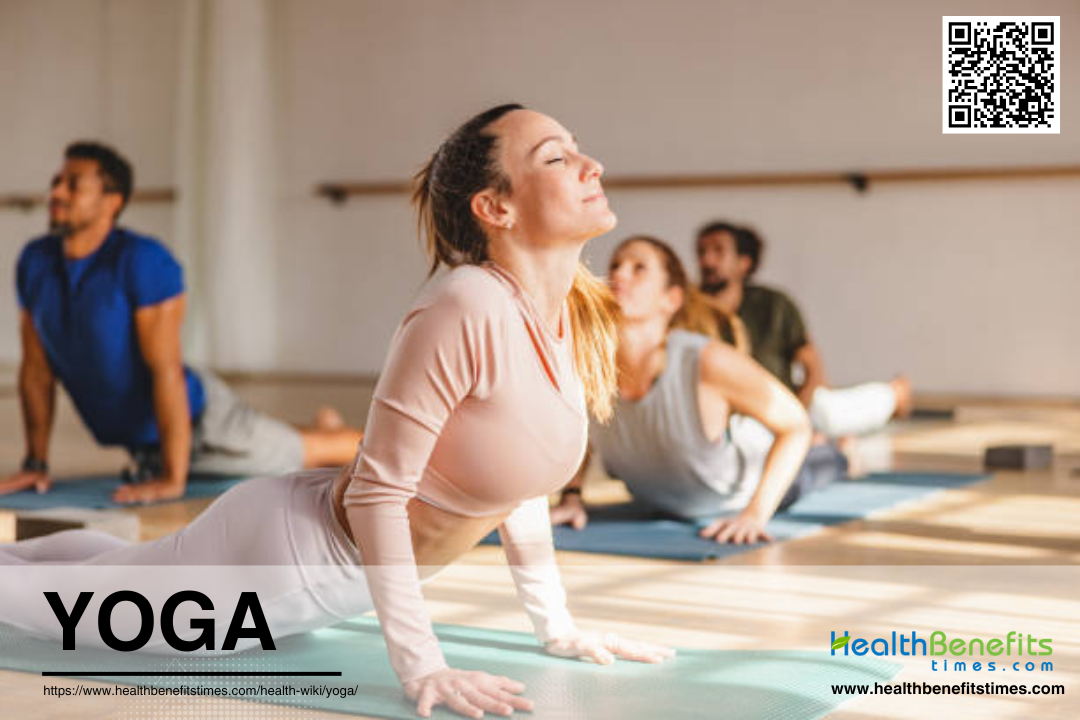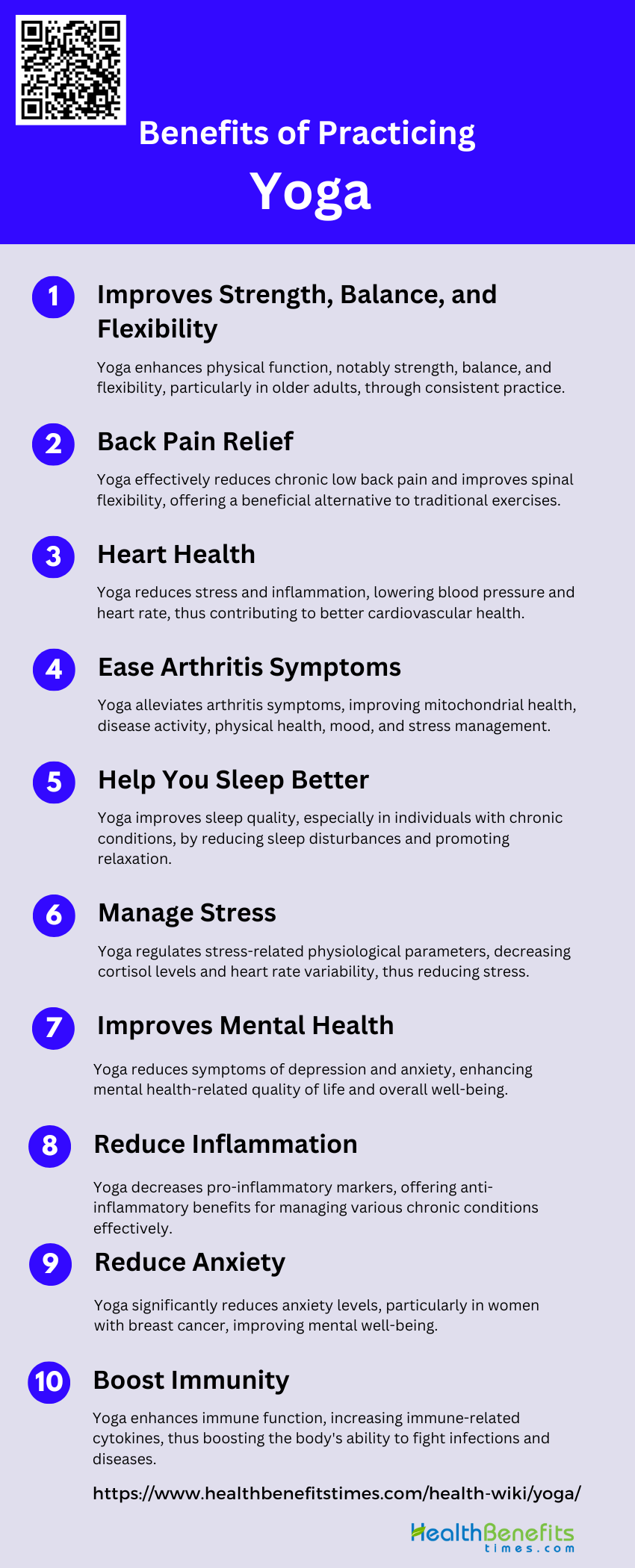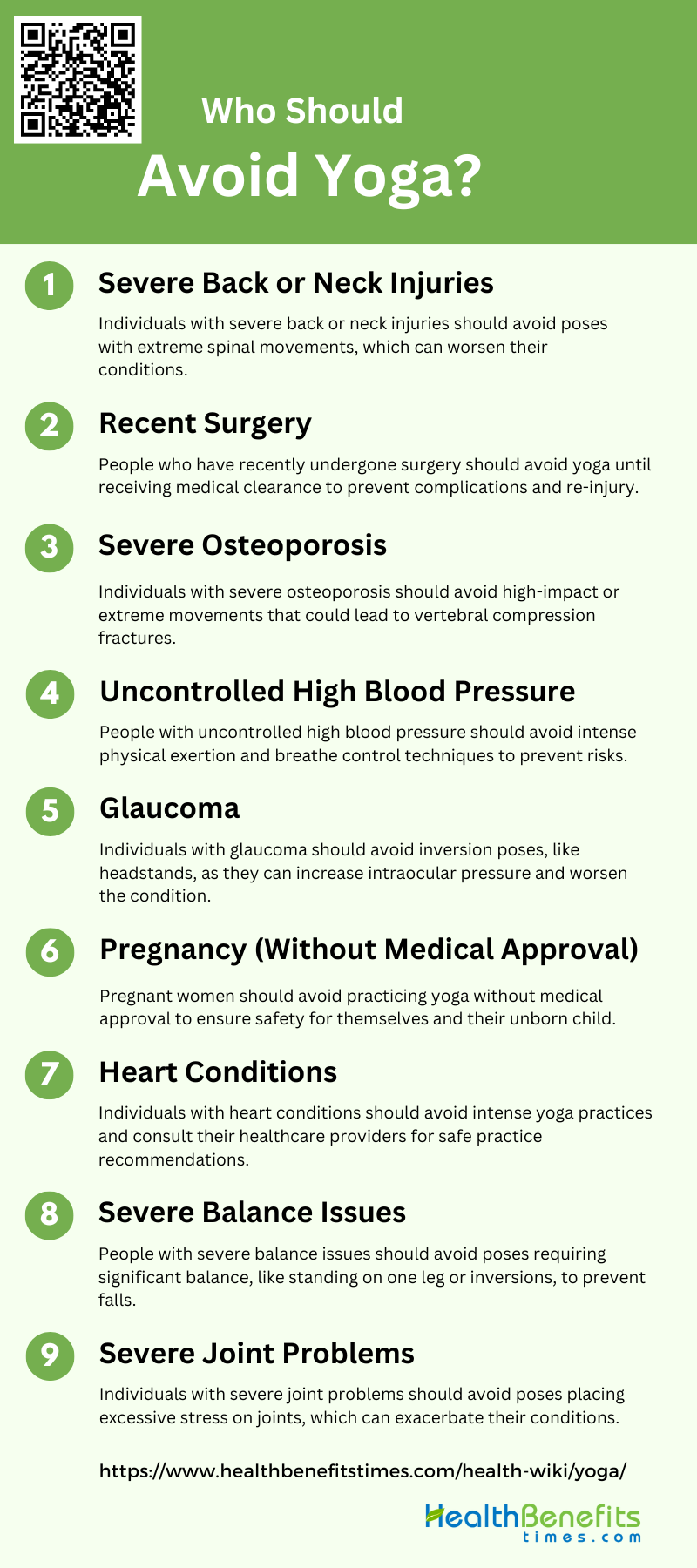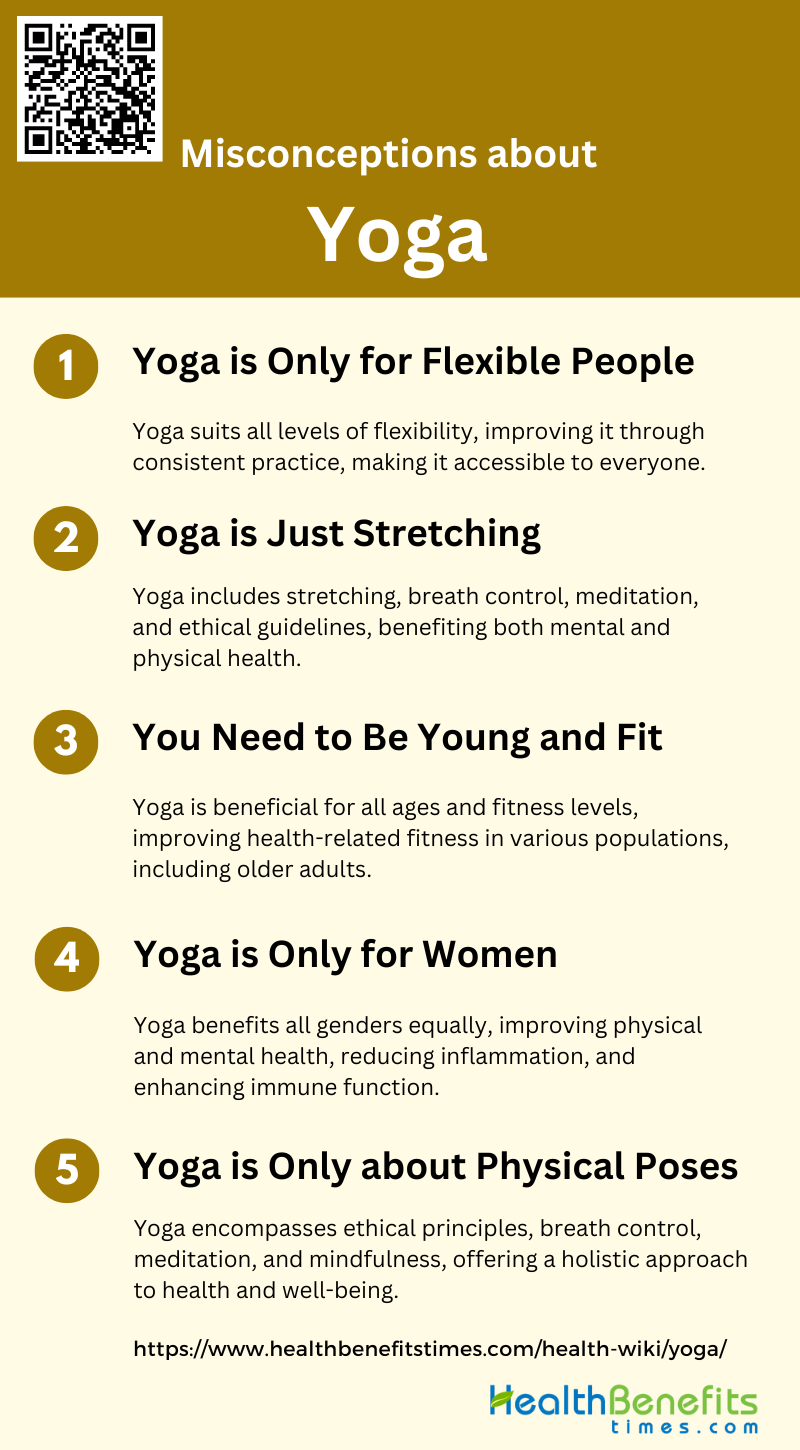Yoga is a mind and body practice with historical origins in ancient Indian philosophy, encompassing a variety of styles that typically combine physical postures, breathing techniques, and meditation or relaxation. While often perceived as a form of physical exercise, yoga’s core principles extend into psychological and spiritual realms, as outlined in Patañjali’s eightfold path. This holistic approach integrates the physical, mental, and spiritual aspects of well-being, making it a comprehensive system for health and personal growth. Contemporary research highlights yoga’s effectiveness in managing mental health conditions such as PTSD and its feasibility and acceptability among diverse populations, including older adults and women.
Types of Yoga
Whether you’re looking to increase flexibility, build strength, or find inner peace, there’s a type of yoga suited to your needs. Understanding the different styles can help you choose the right practice for your goals and preferences. Below are some of the most popular types of yoga:
- Karma Yoga: The Path of Selfless Service
- Bhakti Yoga: The Path of Devotion
- Raja Yoga: The Royal Path
- Jnana Yoga: The Path of Knowledge
- Tantra Yoga: The Path of Ritual and Energy
- Hatha Yoga: The Path of Physical Discipline
- Kundalini Yoga
- Ashtanga yoga
- Bikram yoga
- Iyengar yoga
- Kripalu yoga
- Power yoga
- Sivananda
- Viniyoga
- Yin yoga
- Prenatal yoga
- Restorative yoga
- Jivamukti Yoga
- Anusara Yoga
- Satyananda Yoga
Chakras of Yoga
Chakras are energy centers in the human body that play a crucial role in physical, emotional, and spiritual well-being. Originating from ancient Indian traditions, particularly within the practices of yoga and Ayurveda, chakras are believed to be points where energy flows and intersects. There are seven primary chakras, each associated with specific physical, emotional, and spiritual functions.
1. Muladhara (Root Chakra): Located at the base of the spine, it is associated with survival, stability, and grounding.
2. Svadhisthana (Sacral Chakra): Located below the navel, it governs creativity, sexuality, and emotions.
3. Manipura (Solar Plexus Chakra): Located in the stomach area, it is linked to personal power, self-esteem, and digestion.
4. Anahata (Heart Chakra): Located in the center of the chest, it is connected to love, compassion, and emotional balance.
5. Vishuddha (Throat Chakra): Located at the throat, it is associated with communication, expression, and truth.
6. Ajna (Third-Eye Chakra): Located between the eyebrows, it is the center of intuition, perception, and higher consciousness.
7. Sahasrara (Crown Chakra): Located at the top of the head, it represents spiritual connection and enlightenment.
Core Elements of Yoga Practice
Understanding the core elements of yoga can help practitioners deepen their practice and enhance their overall well-being. These fundamental components serve as the foundation for a comprehensive yoga routine, promoting physical strength, mental clarity, and emotional stability. Below are the essential elements that form the backbone of a well-rounded yoga practice:
- Asanas (Postures)
- Pranayama (Breath Control)
- Dhyana (Meditation)
- Yamas and Niyamas
- Bandhas (Energy Locks)
- Mudras (Gestures)
- Mantras (Chants)
- Savasana (Relaxation)
Benefits of Practicing Yoga
Practicing yoga offers a multitude of benefits that enhance both physical and mental well-being. From improving flexibility and strength to reducing stress and promoting relaxation, yoga is a versatile practice that can positively impact various aspects of life. Below are some key benefits of incorporating yoga into your daily routine:
1. Improves Strength, Balance, and Flexibility
A systematic review and meta-analysis of randomized controlled trials found that yoga interventions led to significant improvements in lower limb strength, lower body flexibility, and balance in older adults compared to both active and inactive controls. These findings suggest that yoga can be an effective multimodal activity to enhance physical fitness and overall well-being.
2. Back Pain Relief
A randomized controlled study demonstrated that a short-term intensive yoga program significantly reduced pain-related disability and improved spinal flexibility in patients with CLBP compared to a physical exercise regimen. The yoga group showed greater improvements in spinal flexion, extension, and lateral flexion, indicating that yoga can be an effective intervention for managing back pain.
3. Ease Arthritis Symptoms
A randomized controlled trial showed that an 8-week yoga program led to significant improvements in mitochondrial health, disease activity, and disability quotient in RA patients. Another study found that yoga was associated with significant improvements in physical health, mood, stress, and health-related quality of life in sedentary adults with arthritis. These findings suggest that yoga can be a valuable adjunct therapy for managing arthritis symptoms.
4. Heart Health
A systematic review of randomized controlled trials found that yoga led to better regulation of the sympathetic nervous system and hypothalamic-pituitary-adrenal system, resulting in decreased blood pressure and heart rate. These physiological changes contribute to improved cardiovascular health and reduced risk of heart-related issues.
5. Help You Sleep Better
A systematic review found that yoga interventions significantly reduced sleep disturbances and improved sleep quality in women diagnosed with breast cancer. These improvements in sleep can be attributed to the relaxation and stress-reducing effects of yoga, making it a beneficial practice for enhancing sleep.
6. Manage Stress
Yoga is well-known for its stress-reducing benefits. A systematic review of randomized controlled trials found that yoga practice led to better regulation of stress-related physiological parameters, such as cortisol levels and heart rate variability. These changes were associated with decreased depressive and anxious symptoms, indicating that yoga can be an effective intervention for managing stress and improving mental well-being.
7. Improves Mental Health
Yoga has been shown to have positive effects on mental health, including reducing symptoms of depression and anxiety. A systematic review found that yoga interventions led to significant improvements in mental health-related quality of life, reduced fatigue, and decreased sleep disturbances in women with breast cancer. These findings suggest that yoga can be a valuable complementary therapy for improving mental health and overall quality of life.
8. Reduce Inflammation
A systematic review of randomized controlled trials found that yoga can downregulate pro-inflammatory markers such as IL-1beta, IL-6, and TNF-alpha. These anti-inflammatory effects suggest that yoga can be implemented as a complementary intervention for populations at risk or already suffering from inflammatory diseases.
9. Reduce Anxiety
Yoga has been found to reduce anxiety levels in various populations. A systematic review of randomized controlled trials found that yoga practice led to significant reductions in anxiety symptoms, particularly in women with breast cancer. These findings suggest that yoga can be an effective intervention for reducing anxiety and improving mental well-being.
10. Boost Immunity
A randomized controlled pilot study found that regular yoga practice significantly increased immune-related cytokines such as interleukin-12 and interferon-gamma in healthy young people. These findings suggest that yoga can boost immune function and improve the body’s ability to fight off infections and diseases.
Yoga Equipment and Accessories
Yoga is a practice that can be enhanced with the right equipment and accessories. Here are some common items used in yoga:
1. Yoga Mat: Provides a non-slip surface for practicing poses and offers cushioning for comfort.
2. Yoga Blocks: Help with balance and support in various poses, making them accessible for all levels.
3. Yoga Straps: Aid in stretching and achieving proper alignment, especially in poses that require flexibility.
4. Yoga Bolsters: Provide support and comfort in restorative poses and can be used to deepen stretches.
5. Yoga Wheels: Assist in backbends and improving flexibility.
6. Yoga Blankets: Offer support and comfort in seated and lying poses, and can be used for warmth during meditation.
7. Yoga Towels: Absorb sweat and provide a non-slip surface, especially useful in hot yoga.
8. Meditation Cushions: Provide comfort and support during meditation sessions.
9. Yoga Bags: Convenient for carrying your yoga mat and other accessories to and from class.
Who should avoid Yoga?
While yoga is generally beneficial for most people, there are certain conditions and situations where it may not be advisable. Individuals with severe medical conditions, recent surgeries, or specific physical limitations should consult a healthcare professional before starting a yoga practice. Here are some specific cases where caution is necessary:
1. Severe Back or Neck Injuries
Individuals with severe back or neck injuries should avoid yoga, particularly poses that involve extreme spinal flexion and extension. According to a biomechanical analysis, such poses can exacerbate conditions like degenerative joint disease and facet arthropathy, leading to increased pain and potential complications. Additionally, yoga poses that involve significant spinal movements have been associated with vertebral compression fractures, especially in those with pre-existing spinal conditions. Therefore, it is crucial for individuals with severe back or neck injuries to consult healthcare providers before engaging in yoga.
2. Recent Surgery
People who have recently undergone surgery should avoid yoga until they receive medical clearance. Post-surgical patients are at a heightened risk of complications such as infections, delayed healing, and re-injury. Engaging in yoga too soon can place undue stress on surgical sites, potentially leading to adverse outcomes. A systematic review of adverse events associated with yoga highlighted the importance of practicing under the guidance of a qualified instructor and adapting poses to individual medical conditions. Therefore, it is essential for post-surgical patients to follow their physician’s advice regarding physical activity.
3. Severe Osteoporosis
Individuals with severe osteoporosis should avoid yoga poses that involve high-impact or extreme movements. A case series identified that yoga poses involving spinal flexion can lead to vertebral compression fractures in individuals with osteoporosis. Additionally, a biomechanical analysis found that patients with osteopenia or osteoporosis are at a higher risk of compression fractures or deformities when performing extreme spinal flexion and extension poses. Therefore, it is crucial for individuals with severe osteoporosis to avoid such poses and consult healthcare providers for safer exercise alternatives.
4. Uncontrolled High Blood Pressure
People with uncontrolled high blood pressure should avoid certain yoga practices, particularly those involving intense physical exertion or breathe control techniques like pranayama. A systematic review of adverse events associated with yoga found that forceful breathing techniques can pose risks to individuals with pre-existing medical conditions, including high blood pressure. While yoga can offer benefits for cardiovascular health, it is essential for individuals with uncontrolled high blood pressure to consult their healthcare providers and practice under the supervision of a qualified instructor.
5. Glaucoma
Individuals with glaucoma should avoid yoga poses that involve inversions, such as headstands and shoulder stands. These poses can increase intraocular pressure, potentially worsening the condition. A systematic review of adverse events associated with yoga identified glaucoma as a medical precondition that requires careful adaptation of yoga practices. Patients with glaucoma should work closely with their healthcare providers and yoga instructors to modify or avoid poses that could exacerbate their condition.
6. Pregnancy (Without Medical Approval)
Pregnant women should avoid practicing yoga without medical approval. Certain yoga poses can place undue stress on the abdomen and lower back, potentially leading to complications. A systematic review of adverse events associated with yoga emphasized the importance of practicing under the guidance of a qualified instructor and adapting poses to individual medical conditions. Pregnant women should consult their healthcare providers to ensure that their yoga practice is safe for both themselves and their unborn child.
7. Heart Conditions
Individuals with heart conditions should avoid certain yoga practices, particularly those involving intense physical exertion or breathe control techniques. A systematic review of adverse events associated with yoga found that forceful breathing techniques can pose risks to individuals with pre-existing medical conditions, including heart conditions. While yoga can offer benefits for cardiovascular health, it is essential for individuals with heart conditions to consult their healthcare providers and practice under the supervision of a qualified instructor.
8. Severe Balance Issues
People with severe balance issues should avoid yoga poses that require significant balance and stability, such as standing on one leg or inversions. These poses can increase the risk of falls and injuries. A biomechanical analysis of yoga-related injuries highlighted the importance of modifying exercise activities to prevent exacerbation of existing conditions. Individuals with severe balance issues should work with their healthcare providers and yoga instructors to adapt poses and ensure a safe practice environment.
9. Severe Joint Problems
Individuals with severe joint problems should avoid yoga poses that place excessive stress on the joints, such as deep squats or poses requiring significant weight-bearing on the hands and wrists. A biomechanical analysis of yoga-related injuries found that certain poses can exacerbate conditions like degenerative joint disease and facet arthropathy. Therefore, it is crucial for individuals with severe joint problems to consult healthcare providers and modify their yoga practice to avoid further joint damage.
Common Misconceptions about Yoga
There are several common misconceptions about yoga that can deter people from trying it or fully understanding its benefits. Here are a few:
1. Yoga is Only for Flexible People
A common misconception is that yoga is only for those who are already flexible. However, yoga is a practice that can be adapted to suit all levels of flexibility. Studies have shown that yoga can improve physical function and health-related quality of life in various populations, including older adults and those with chronic conditions. Flexibility is not a prerequisite but rather a benefit that can be developed through consistent practice. Yoga’s inclusive nature allows individuals to start at their own level and progress at their own pace, making it accessible to everyone regardless of their initial flexibility.
2. Yoga is Just Stretching
Another misconception is that yoga is merely a series of stretching exercises. While stretching is a component, yoga encompasses much more, including breath control, meditation, and ethical guidelines. Research has demonstrated that yoga can positively impact mental health, reduce symptoms of anxiety and depression, and improve autonomic nervous system functioning. Yoga’s holistic approach addresses both the mind and body, offering benefits that extend beyond physical flexibility and strength.
3. You Need to Be Young and Fit
Many people believe that yoga is only suitable for the young and physically fit. However, yoga can be beneficial for individuals of all ages and fitness levels. Studies have shown that yoga can improve physical mobility, muscle strength, and overall health-related fitness in older adults and those with chronic conditions like type 2 diabetes and breast cancer. Yoga’s adaptability allows it to be tailored to meet the needs of each individual, making it a valuable practice for enhancing health and well-being across the lifespan.
4. Yoga is Only for Women
The perception that yoga is predominantly for women is another misconception. While it is true that a higher percentage of yoga practitioners are women, yoga is equally beneficial for men. Research indicates that yoga can improve physical and mental health outcomes for all genders, including reducing inflammation, enhancing immune function, and alleviating pain. The practice of yoga offers a wide range of benefits that are not gender-specific, making it a valuable tool for anyone seeking to improve their overall health.
5. Yoga is Only about Physical Poses
Many people think yoga is solely about performing physical poses (asanas). However, yoga is a comprehensive practice that includes ethical principles, breath control (pranayama), meditation, and mindfulness. Studies have shown that yoga’s mental and spiritual components can significantly reduce stress, anxiety, and depression, and improve overall quality of life. The integration of these elements makes yoga a holistic practice that nurtures the mind, body, and spirit, offering a well-rounded approach to health and well-being.
Potential Risks of Yoga
While yoga offers numerous benefits for physical and mental well-being, it is not without its risks. Practitioners should be aware of potential issues that can arise, particularly if poses are performed incorrectly or without proper guidance. Here are some potential risks associated with yoga:
1. Muscle Strains
Muscle strains are a common risk associated with yoga practice. According to a systematic review, the most frequently reported injuries in yoga are musculoskeletal, including muscle strains and sprains. These injuries often occur due to overstretching or improper alignment during poses. A study found that 28% of yoga practitioners who reported injuries experienced mild strains, which did not require medical intervention but lasted less than six months. Another study highlighted that the incidence rate of pain caused by yoga was 10.7%, with muscle strains being a significant contributor. Therefore, it is crucial for practitioners to be mindful of their limits and practice under proper guidance to minimize the risk of muscle strains.
2. Joint Injuries
Joint injuries are another potential risk for yoga practitioners. The literature indicates that yoga can lead to joint injuries, particularly in the knees, shoulders, and wrists. A systematic review of epidemiological studies found that the most common adverse events related to yoga were musculoskeletal, with joint injuries being prevalent. Specific poses, such as handstands and shoulder stands, have been associated with a higher risk of joint injuries. Additionally, a cross-sectional survey revealed that 63% of reported injuries were moderate, including joint injuries that lasted from six months to a year. Practitioners should be cautious with poses that put excessive strain on the joints and seek modifications if necessary.
3. Head and Neck Injuries
Head and neck injuries are serious risks associated with certain yoga poses. A systematic review and meta-analysis on the effects of yoga on chronic neck pain found that while yoga can be beneficial, improper practice can lead to neck injuries. Headstands and shoulder stands are particularly risky, as they place significant pressure on the cervical spine. A national cross-sectional survey reported that headstands were among the practices most commonly associated with acute adverse effects, including head and neck injuries. To mitigate these risks, it is essential for practitioners to ensure proper alignment and avoid poses that strain the neck, especially without adequate supervision.





